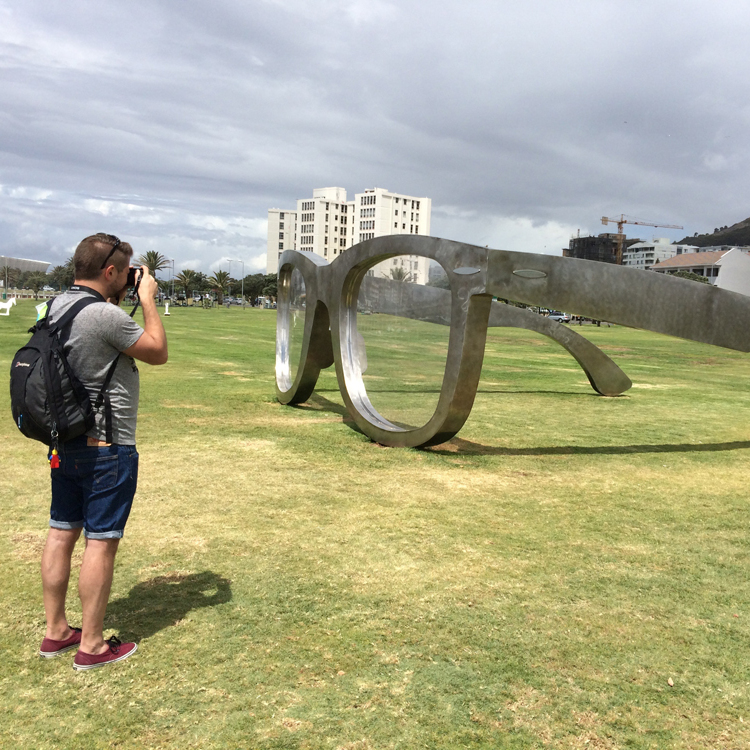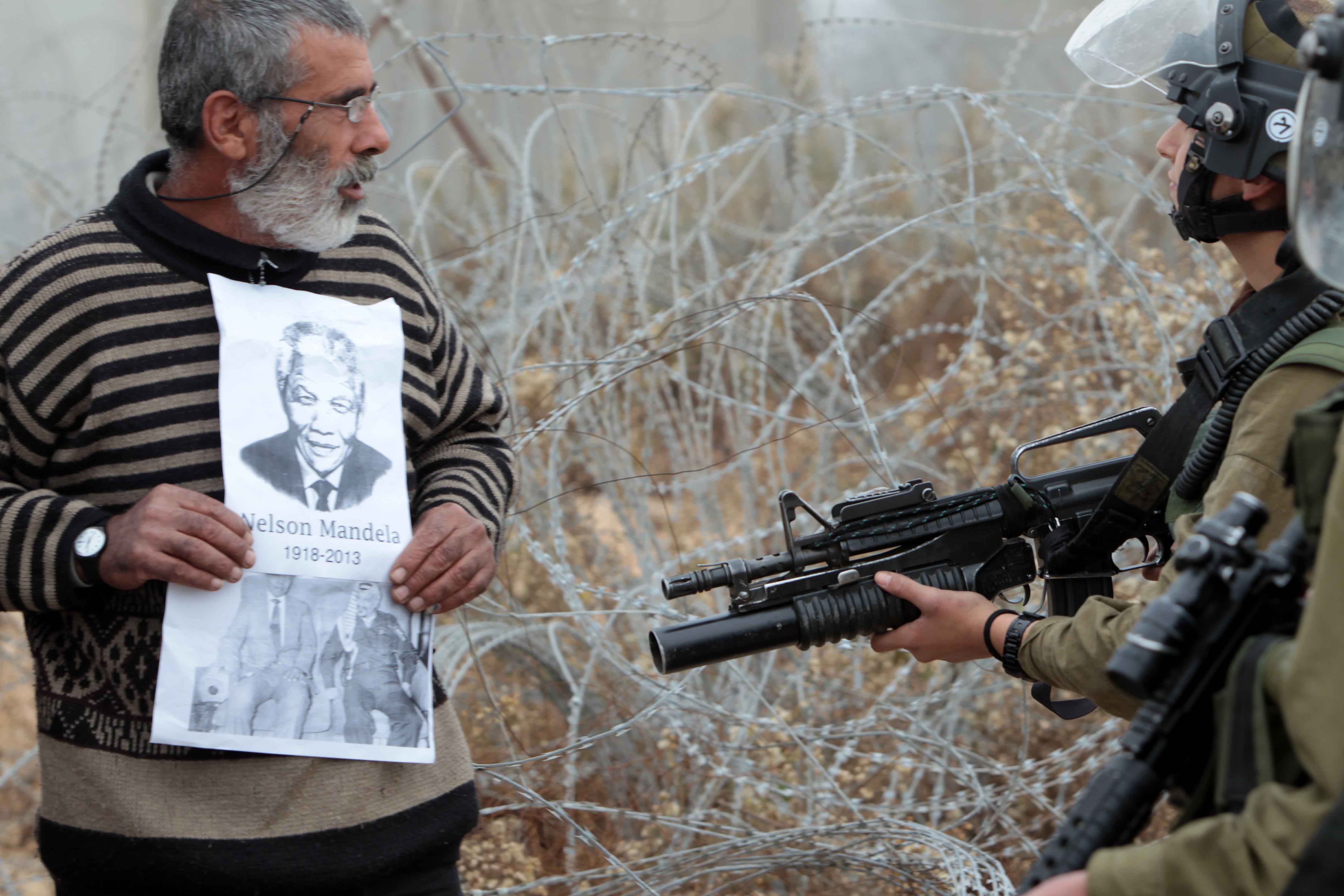
The world pays tribute to Mandela (slideshow)
As South Africans come to terms with the loss of former president Nelson Mandela, the rest of the world bids farewell to Madiba.
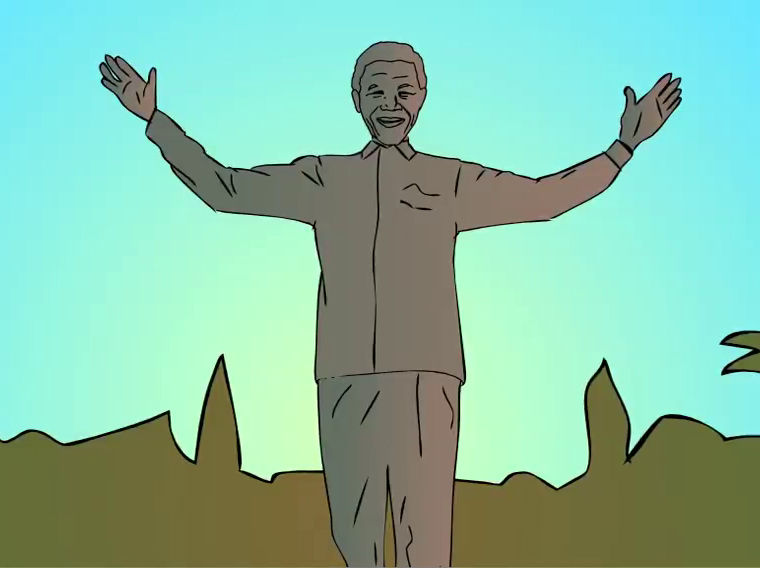
Pimples: Saving Madiba's rabbit (video)
Gwede, Mac and Blade try their best to stop the rabbit from whispering in Mandela's ear. But the elusive animal has some tricks up its sleeve.
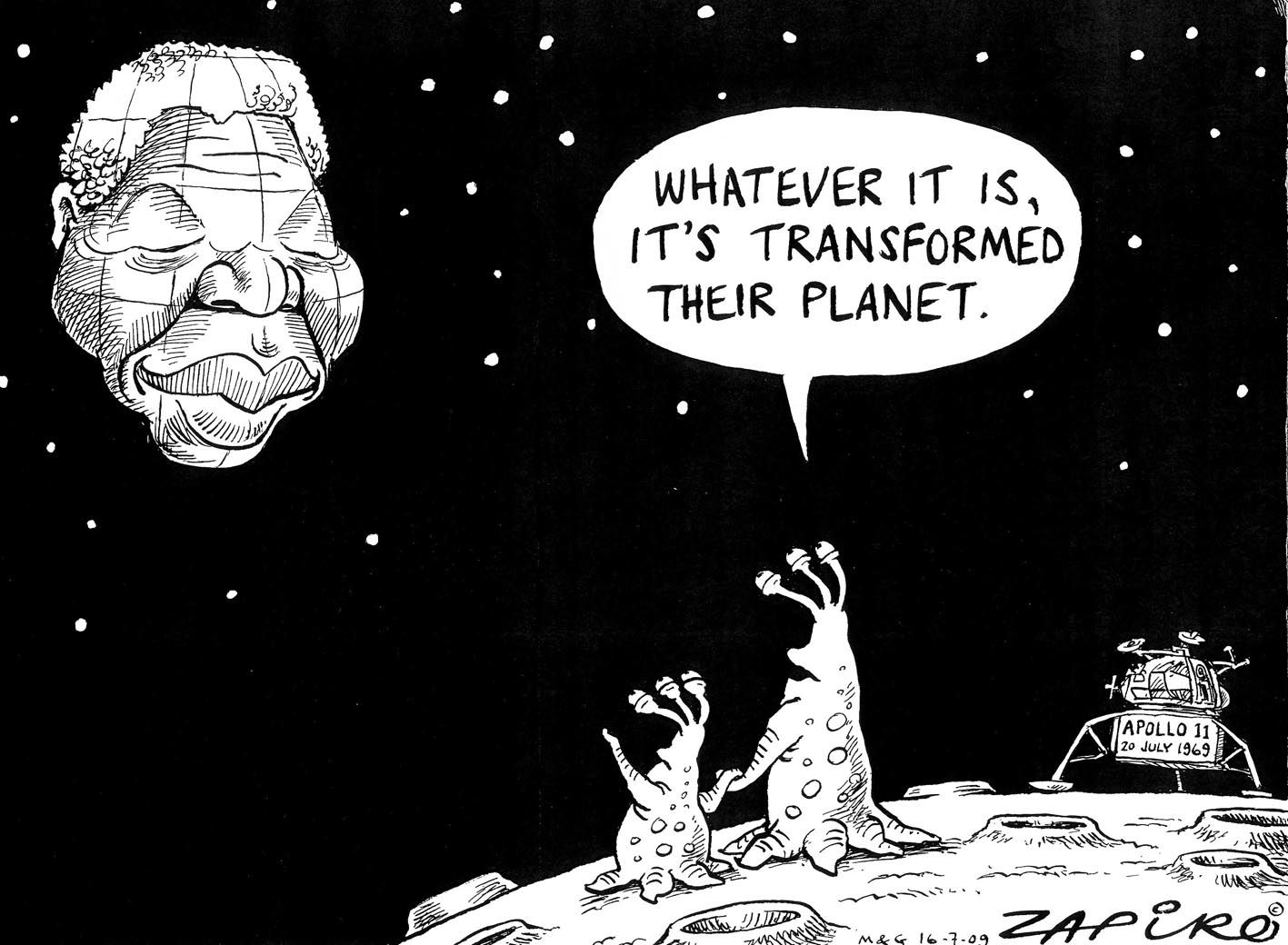
Zapiro's best Madiba cartoons (slideshow)
From his toughest moments to his most triumphant, Madiba has been an inspiration. Here are some of our favourite Zapiro cartoons about him from 1994 to 2013.
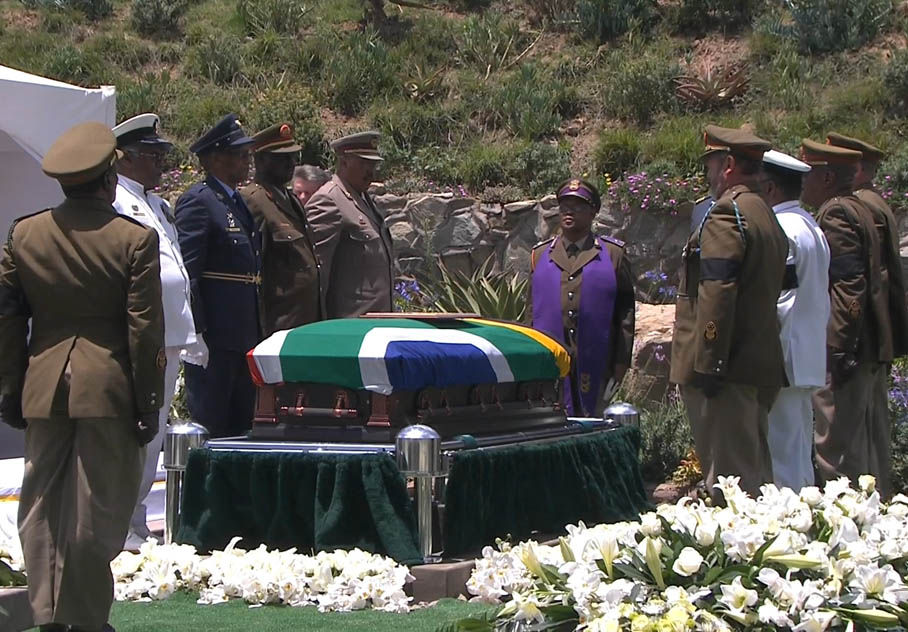
Mandela: SA's greatest son laid to rest (slideshow)
The world watched as Nelson Mandela was finally laid to rest in his hometown of Qunu following a dignified and moving funeral ceremony on Sunday.
Mandla Msiza, a parliamentary officer who shuttles between Johannesburg and Cape Town for work, was in Gauteng last Thursday when artist Michael Elion’s stainless steel depiction of a pair of branded sunglasses was unveiled on a grassy common in Sea Point.
When he returned to the Mother City this week, Msiza decided to view Elion’s 2.5m high “sculpture tribute” to Nelson Mandela.
He was unaware of the furore surrounding the work’s expedient pairing of corporate promotion with Mandela’s political biography. He saw the sunglasses on a television news report.
“I don’t want to hear or read what someone writes about history,” said Msiza, when I encountered him at the 1?200kg sculpture. He was with work colleague, Nyiko Sono. “I want to see and touch it for myself,” Msiza said.
Like other visitors to Elion’s outsize sculpture, which is titled Perceiving Freedom and will be on display for two years, Msiza and Sono took turns photographing each other in front of it. Sono adopted a variety of poses, some jokey, but Msiza stood as solemn as a church minister, in his grey suit and green tie.
The background history
This ritual of self-affirmation included a group of five workmen in paint-speckled blue overalls and a trio of hipsters, two of whom managed to scale Elion’s sculptural metaphor.
The work is positioned to look out across the Atlantic Ocean to the pancake-flat form of Robben Island, in effect establishing “a dialogue with our country’s history”.
Her back turned to this history, a young photographer snapped her friends seated on the sculpture. “Hashtag famous,” quipped one from his lofty perch.
In a text panel accompanying Elion’s work, which rehearses the formal grammar of American sculptor Claes Oldenburg, the artist poses a series of rhetorical questions: “How did Nelson Mandela perceive the world? And, what does it mean for each of us to be truly free?”
“Like most public sculptures in Cape Town, is this not just another monument to white privilege?” asked artist Gerald Machona in a Facebook post, prompted by the disapproving reading of the sculpture by another artist, Candice Breitz. “Whose freedom is being celebrated here really?”
“This kind of carping would be trivial if it was not for the entirely central positioning of Ray-Ban in this ideological exercise,” wrote artist and props fabricator John Nankin, who has arguably led the most incisive and sustained critique of Elion’s work on social media.
The plaque accompanying Elion’s work explicitly declares that the work, which is modelled on a pair of Ray-Ban Wayfarers, is sponsored by the sunglasses brand which, since 1999, has been owned by the Italian eyewear company Luxottica Group.
Sunglasses are not an incidental feature of Mandela’s biography. When he first entered prison in 1964, Mandela was forced to quarry limestone in blinding light; but his request for sunglasses was refused for three years.
Elion has contextualised his work with a reproduction of a 1977 photograph of Mandela wearing sunglasses, taken during a choreographed press tour of Robben Island.
Out of proportion
The Nelson Mandela Foundation approved the use of the photograph, its communications director, Danielle Melville, confirmed. “Such permission does not constitute endorsement of the work,” she added. “The latter involves a complex process, including the signing of a code of conduct, and did not apply to the case in question.”
In its original conception, Elion’s sculpture had nothing to do with Mandela. Trained as an architect, Johannesburg-born Elion is interested in perceptual dynamics, in what happens when the familiar scale of something is interfered with.
In 2007, while living in Paris, he exhibited a series of large-scale photographs of flies recorded in microscopic detail. In 2012, he created an oversized Ferrari-red grenade sculpture that, according to the artist, contained an actual detonation charge.
Two years ago, Elion approached a local retailer to sponsor a new work depicting an oversized pair of sunglasses, which he wanted to install on a site in Camps Bay. The negotiations fell through.
He later submitted his proposal to Art54, a City of Cape Town-approved pilot art project led by Sea Point councillor, Beverly Schäfer. His proposal, which made no reference to Mandela, was accepted.
The corporate precedent
Site issues in Camps Bay eventually saw Elion’s work shifted to Sea Point.
While working on the sculpture, Elion was shown the 1977 Mandela photo by filmmaker and art dealer Guto Bussab. Very quickly Elion’s exercise in scale assumed the arid purpose of meaningfulness.
His forsaken sunglasses are not alone in enjoying a corporate patron. Further along Sea Point’s dog-and-bicycle-friendly promenade, the retailer Woolworths underwrote Andre Carl van der Merwe’s anamorphic depiction of a rhino. The Art54-approved work has its own viewing deck and includes a tabulation of poaching statistics.
“I thought there would be a tiny bit of a hoopla around Ray-Ban,” conceded Elion, who met Mandela by chance once in the early 1990s in the Rondebosch CNA.
The artist has gamely attempted to refute his critics online, even posting a student essay on Immanuel Kant’s 1790 Critique of Judgement, produced during an aborted doctorate at the University of Paris VIII.
Elion is not the first artist to attempt to braid aspects of Mandela’s legacy opportunistically into an artwork and encounter a violent headwind as a result. Johannesburg painter Yiull Damaso has buoyed his career with slipshod figurative studies of Mandela that occasionally grab headlines.
Sculptor Chris Swift has managed to parlay this opprobrium through a commercial enterprise. Since 2009, he has incorporated bits of the perimeter fence he salvaged from Robben Island in various personal and collective art projects. His Robben Island Fence Company also sells domesticated portraits of Mandela, which include a part of the original Robben Island fence.
“This isn’t merely a fence,” a statement on the company website reads. “It’s a powerful reminder of our country’s greatest story.”
Next Wednesday, Swift will unveil a new sculptural work on Signal Hill. Titled SunStar, the work is partly sponsored by Sun International.


